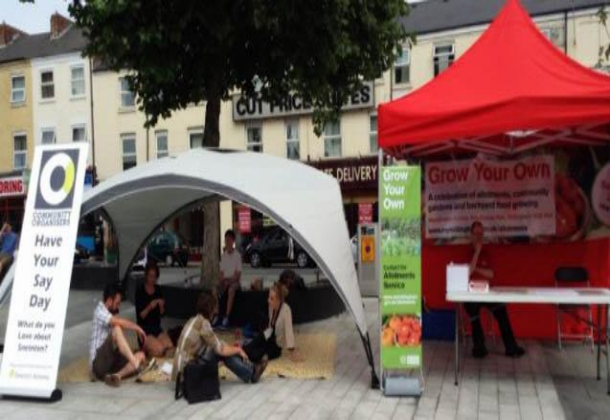In July, the Minister for Civil Society, Rob Wilson, set out his vision for a Bigger, Stronger Society. At the core of that vision is an ambition to build stronger, more resilient communities where people ask what they can do for their community, not only what their community can do for them.
One way in which the government is building a Bigger, Stronger Society is through the Community Organisers Programme. Set up in 2010, the programme is delivered by Locality. Over 6,422 Community Organisers and volunteers have been mobilised in England to date – exceeding the original target of 5,000.
Community Organisers listen to neighbours in their local ‘patch’ and encourage action around the issues that matter most to residents. They build relationships and create local networks to encourage people to create social and political change through their collective action. The overall aim is to help change these neighbourhoods for the better. So can we measure their impact at the community level?

Measuring Community Impact is a Challenge
A formal independent evaluation has been commissioned and is looking at the effectiveness of programme processes such as community organiser recruitment, training, support and progression after the programme. It is also looking at the impact on organisers and in turn their perceived impact on the local community. The interim report by Ipsos MORI can be found here.
Measuring actual community impact for this programme is a real challenge though. The number of communities involved, the phased roll-out over three years and the nature of the programme in which each community focusses on potentially different issues makes a ‘before vs after’ community survey around a common set of outcomes both difficult to design and prohibitively expensive to deliver.
However, there are a few common outcomes we might expect. Those living in Community Organiser patches might feel more able to influence decisions, be more active in local decision making and feel part of more cohesive neighbourhoods. They might well also experience a greater sense of purpose and well-being as a result of increased social contact around issues of common interest. These are themes covered and measured by the Community Life Survey.
Extending the Community Life Survey into Community Organiser Areas
We asked TNS BRMB to run the Community Life Survey in seven Community Organiser areas, when administering the survey nationally in 2014, and then to compare the results with similar people in similar non-Community Organiser areas. This approach provides only a single snapshot in time during which the Community Organisers were operational in a small fraction of areas, but it does allow us to usefully test for meaningful differences between these and comparator areas. The results are just in.
So what differences did we find?
Patches were found to be similar (statistically the same) to comparator areas across a broad range of measures including civic participation, social action and volunteering rates. Importantly though, Community Organiser patches were on the whole no worse than comparator areas on any significant measure but found to be better in a few notable areas. A greater proportion of those in the patches felt that people pull together to improve their area (51% and 39% respectively). Individuals within the patches also reported a stronger sense of belonging to their neighbourhoods (54% compared to 46% respectively). Differences in approaches to influencing decisions were also found; those in Community Organiser areas where more likely to organise a paper petition (44% and 37% respectively) or organise a group (9% compared with 4%) for example.
Small but statistically significant differences in well-being were found. Those surveyed in patches reported a greater sense of ‘worthwhile’ in life and those living in patches were more likely to answer medium or high than the more extreme scores of low or very high for life satisfaction and happiness – suggesting a different distribution of well-being in organiser areas with lower inequalities.
Around 15% of local people responded that they were aware of Community Organisers which is broadly in line with the target to conduct 500 ‘listenings’ among residents in each area – although reported contact, at 4%, was perhaps lower than expected.
Encouraging results to set alongside other evidence
We can’t ascribe causality but the results highlight a few positive differences between the patches surveyed and comparator areas around indicators we might expect to change as a result of the programme. Other indicators, including some which we might also have expected to have improved, were essentially the same.
Using the Community Life Survey to support policy
From a methodological perspective this work highlights the value of the Community Life Survey in providing additional supporting evidence for policy evaluations; the questions within the survey are clearly relevant to policies intended to have an impact on communities and on social capital. If you want to make use of the data too you can download the survey at the UK Data Service here. New results for the 2014-2015 survey have just been published and are available here.
Recent Comments